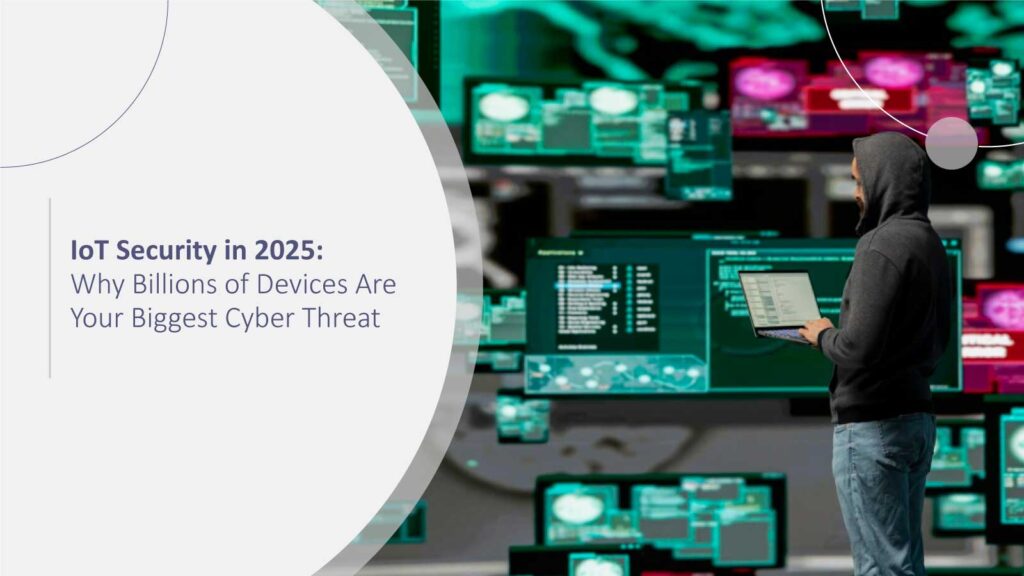Cybersecurity leaders face many security threats in today’s digital age, putting even the best current defensive strategies to the test. However, Advanced Persistent Threats (APTs) present more significant challenges than any of these because they remain persistent, sophisticated, and stealthy. Unlike past attacks, APTs represent prolonged, multi-stage campaigns. Skilled adversaries conduct long-term, multi-stage campaigns on networks while silently engaging in prolonged activities and maintaining undetected access to enterprise networks.
With organizations embracing cloud-first strategies that facilitate remote working and complex third-party ecosystems, APTs have become one of the most difficult problems for security in modern organizations. CISOs, CIOs, and other security leaders need to understand what APTs are. How they work. and the implications for protecting sensitive assets in a dynamic and increasingly adversarial environment.
What do Advanced Persistent Threats represent?
Advanced Persistent Threats are more than one-off attacks; they represent a series of calculated, ongoing campaigns. Nation-state actors typically perpetrate them. Highly skilled groups of hackers, or organized criminal groups that have objectives of a specific strategic nature. Unlike ransomware, which often aims to disturb operations quickly and garner some level of financial gain. Advanced Persistent Threats (APTs) instead focus on stealthily entering and surveilling, often for long periods of time.
The “advanced” component refers to the attacker being able to employ advanced/exploited methods of attack and persistence. This may include stealing/researching proprietary software or exploits, writing their own custom malware, and/or utilizing social engineering. The term “persistent” clarifies that they exist within our networks repeatedly. Sometimes, without triggering alerts for extended periods of time. The term “threat,” in this particular case, often represents the scary possibility that something horrible will happen from the potential of intellectual property theft, massive fraud, or Plan Z occurring through disruption to our critical infrastructure.
APTs can cause a lot of destruction because they will exploit technology weaknesses. But they will also exploit human behavior. They will enter through whatever means work, generally “go underground, maintain persistence, and execute their plan by moving laterally across systems and exfiltrating data. while evading most security and SIEM responses.
The Evolution of APTs in Enterprise Security
2000s: The Rise of State-Sponsored Cyber Espionage
Advanced Persistent Threats (APTs) gained visibility among the public in the mid-2000s through campaigns like Titan Rain and GhostNet. These campaigns showcased how state-sponsored resources could perform long-running operations by responding to information theft that primarily targeted government agencies and critical infrastructure. In these instances, espionage referred to perception, geopolitics, and information acquisition instead of financial theft.
2010-2015: Weaponizing Zero-Days and Living Off the Land
Attackers continuously adapt and invest in newer tactics. By the early 2010s, APT actors were heavily reliant on zero-days, attacks that exploited vendors’ and teams’ unpatched vulnerabilities. Campaigns like Stuxnet from 2010 represented a stronger, more engaged capability to not only accomplish war through returning information but also full world physical harm; expect more to come from adversaries. They also adopted living-off-the-land, They adopted ‘living off the land’ techniques, using legitimate system tools to mask their activities and avoid raising suspicion.
2016–2020: Expanding into the Supply Chain
As enterprises strengthened their internal defenses, APTs pivoted to attacking the supply chain. By compromising third-party vendors and trusted software providers, attackers could bypass direct defenses and infiltrate multiple organizations at once. The NotPetya attack (2017) and SolarWinds breach (2020) marked a turning point, showcasing the catastrophic potential of supply chain infiltration.
2020 Onwards: APTs in the Era of Remote Work and Cloud Adoption
The global shift to remote work created new vulnerabilities. APT groups quickly began exploiting decentralized IT environments, unsecured endpoints, and cloud misconfigurations. With hybrid infrastructures becoming the norm, attackers no longer limit themselves to governments and defense. These campaigns often aim for financial gain, blending espionage with ransomware and data extortion.

Anatomy of an Advanced Persistent Threat (APT) Attack
APT campaigns follow a cycle with clearly defined phases:
1. Reconnaissance – The attackers select and research a target, looking for information about potential weaknesses. They gather information from open sources, information phishing, or information from compromised insiders.
2. Initial Compromise – The attackers use spear-phishing emails, malware-laced attachments, or software code vulnerable to exploitation.
3. Establishing Foothold – The attackers install a set of backdoor, encrypted rootkits to gain persistence.
4. Privilege Escalation – The attacker begins to move laterally, compromising a privileged account to take control of more systems or accounts.
5. Internal Reconnaissance – The attacker is essentially mapping out the internal network, looking for data that has meaningful value and systems that need a high level of privilege.
6. Exfiltration – The attacker pulls out sensitive data in a form that often encrypts and obfuscates it as part of normal network traffic.
7. Covering Tracks – The attacker may manipulate logs when needed and obfuscate the means of persistence, and remove indications that they were present to put off the defenders.
In contrast to a traditional attack, attackers often conduct APTs as open-ended campaigns. After performing the actions they need to, an APT actor is likely to pick other paths to accomplish their mission. After defenders have shut down one or more paths, they will remain persistent until they conclude the mission.
Techniques and Tools Used by APT Groups
Advanced Persistent Threats (APTs) are highly adaptable and discreet, using both traditional techniques and advanced evasion techniques to infiltrate organizations. Here are some of the most common techniques available:
Spear Phishing
The simplest and effective way to gain access to an organization. Spear phishing is the act of sending an email that appears legitimate to the end user, but is actually malicious, with the end goal of attracting a target. APTs will often do extensive research on the target so that when they send the spear phishing email, recipients are much less likely to detect it. APTs usually target the email network of their organization. Once the user opens the email, they are far more likely to compromise than with broad, generic phishing attempts.
Watering Hole Attacks
In contrast to spear phishing emails, where the APT is focused on going after the target directly, this method is to actually compromise the websites that are commonly frequented by the organization, employees, or customers. The APTs exploit user trust in legitimate websites so that the next time the user clicks the link to that website. The APT can deliver its malicious code silently, ultimately granting the APT access to a stealth foothold into the organization.
Credential Dumping
It is common for APT groups to first attempt to pull stored credentials only from memory, the Windows Security Account Manager (SAM) database, or other retained sources. To protect their data, Stolen credentials allow attackers to escalate privileges and move laterally across systems. without raising immediate alerts to their behaviors.
Custom Malware
APTs create specific malware, specialized for the environment in which they’ll deploy their operations. They develop custom and unique code to guarantee that signature-based security systems, at the host and network level, won’t identify it, and that patching vulnerabilities alone won’t remove it, as persistence mechanisms remain in place.
Command and Control (C2) servers
Once inside, the attacker must also find a way to communicate with the compromised system or systems. C2 servers act as remote command centers, delivering instructions to the target system and retrieving stolen data from the target system. Advanced threat groups increasingly use it with encrypted traffic or embedded within ID or other necessary network traffic to obfuscate the C2 communication.
Increasingly, advanced groups have identified ways to blend each of the above systems with legitimate system tools that are almost guaranteed to be overlooked, lowering the likelihood that they will raise any red flags. If the activity is conducted in the normal course of business, APTs can operate undetected for months or potentially years.
Real-World Examples of Advanced Persistent Threats (APTs)
Studying high-profile APT campaigns gives us a sense for their sophistication and scope:
APT1 (Comment Crew) – A China-based state-sponsored group conducting cyber espionage against U.S. businesses and government organizations.
Stuxnet – Stuxnet was unique in its class and should not be taken lightly.. It is the most recognized APT, designed to damage Iran’s nuclear program, and was unique in showing how cyberattacks can have physical effects outside of the cyber field.
SolarWinds Supply Chain Attack (2020) – Considered one of the most devastating breaches in history, attackers compromised SolarWinds’ Orion software update, which was distributed to thousands of organizations, including government entities.
Lazarus Group – A North Korean threat actor engaging in attacks primarily to harm financial organizations and cryptocurrency exchanges.
Each of these cases highlights not only technical sophistication, but also global and financial elements of APT campaigns.
How APTs Impact Enterprises
The ramifications of Advanced Persistent Threats (APTs) can be the least of the immediate loss of data. For enterprises, the ripples could take years and could be impossible to contain.
Intellectual Property Theft
APTs will usually target sensitive assets such as product designs, research and development data, and trade secrets. For enterprises, losing such intellectual property could undermine years of innovation and give competitors, sometimes even state-sponsored competitors, an unfair advantage.
Financial Losses
In addition to having assets stolen or fraud committed, there are extensive investigation and remediation costs for the enterprises involved. Costs imposed by agencies on the companies for regulatory breaches, and augmented cybersecurity costs. Some attacks last longer than others and result in losses over other assets, including intangible assets such as reputation and brand value that could also diminish otherwise nimble, considering shareholder value and stock price.
Reputation Damage
Reputational damage is one of the hardest assets to recover once lost. The most costly and consequential APT-related breaches have been heavily profiled in the media and can lead customers, partners, and investors to think twice regarding the suitability of doing business with the impacted company.
Disruption of Operations
APTs differ from shorter-term incidents in that, whilst they include many of the same cyber incidents, the complexity, length, and depth of the incident for the targeted organization can remain hidden within systems for months before detection, which gives the APT group ample time to reach operational internal layers and critical services. This could introduce broken links into supply chains, reduce the timeline for critical projects, and cease the ability to perform critical services. All of these are not only organizational impediments, but they can also lead to harm and broken operational links.
Geopolitical Implications
Many APT groups are believed to be state-sponsored, which means that companies may inadvertently be caught up in international disputes beyond their control. For businesses operating globally, these risks often affect partners and supply chains, worsening the overall impact.
Anticipating the future – the next generation of Advanced Persistent Threats:
While businesses invest in AI-enhanced defenses, attackers will adapt too. APT groups will begin to use machine learning to automate reconnaissance, scale personal phishing, and defeat behavior-based detections. And once quantum computing is here and usable, this will have a huge impact on the already drastic capabilities for breaking encryption and raise the risks further.
The merging of the cyber and physical spaces is increasing. For example, APTs can target people’s lives by taking over critical infrastructure – power grids, transportation, healthcare – all of which have national security implications, beyond that of the enterprise. Governments and industries will need to collaborate in defense of these future threats and to build resilience against them.
Conclusion
Advanced Persistent Threats, often referred to as APTs, are one type of cyber risk that represents one of the most complex and damaging subjects for enterprises today. They are stealthy, sophisticated, and relentless. By understanding how APTs work and having good proactive, layered defence strategies in place, enterprises can minimize their risk exposure and build resilience. As lines blur between cybercrime and cyber warfare, it is no longer a matter of whether enterprises need to maintain a proactive posture to survive; it is a given.
FAQs
1. How long can Advanced Persistent Threats (APTs) hide out in a network?
APTs can remain undetected for months or even years, disguising themselves as normal network activity.
2. Are APTs only for government organizations?
No, APTs now target enterprises of all kinds, such as finance, healthcare, energy, and manufacturing.
3. What distinguishes APTs from normal cyberattacks?
APTs are extremely sophisticated, highly dependent on the length of time, and their objectives are espionage and disruption, not necessarily theft for money.
4. Can traditional antivirus software identify Advanced Persistent Threats?
Very rarely. APTs will often employ custom malware along with legitimate system tools that enable them to evade traditional signatures from solutions.
5. What is the best defence against APTs?
A layered security strategy incorporating threat intelligence, Zero Trust, continuous monitoring, and training of staff.
To participate in upcoming interviews, please reach out to our CyberTech Media Room at sudipto@intentamplify.com.





